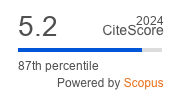Article | Open Access
Destined for Balance? Centralized and Decentralized Approaches to AI Governance
| Views: | 1031 | | | Downloads: | 2399 |
Abstract: The rapid development of AI and rising concerns over its ethical risks have driven states to adopt centralized or decentralized governance approaches. This article examines the factors influencing states’ choices of governance approaches. We hypothesized that states’ choices are influenced by three key variables: per capita gross national income, research and development (R&D) capacity, and the level of ethical risks. The fuzzy-set qualitative comparative analysis (fsQCA) method is adopted to analyze how these independent variables impact states’ governance choices. Our findings suggest that states that have higher income and stronger R&D capacity tend to adopt a more decentralized governance approach. On the contrary, if a state’s income level is high while its R&D capacity is weak, it is likely to take a more centralized approach. Also, there are situations in which states’ R&D capacity is relatively weak but their ethical risk level is comparatively high. These states usually employ a relatively centralized approach to ensure technological innovation and risk control. Generally, the influences of a state’s income level and R&D capacity outweigh the influence of its ethical risk level. Our framework is tested through case studies of the US, China, Germany, France, Singapore, India, Brazil, and Russia. Inspired by the governance choices of the deviant cases, we also found that a balanced governance approach can facilitate AI innovation while safeguarding human rights and freedom. This requires states to reallocate their governance power and achieve a balance between central and local governments, as well as public and private sectors.
Keywords: artificial intelligence; centralization; ethics; governance; research and development
Published:
© Chenghao Sun, Xiyan Chen. This is an open access article distributed under the terms of the Creative Commons Attribution 4.0 license (http://creativecommons.org/licenses/by/4.0), which permits any use, distribution, and reproduction of the work without further permission provided the original author(s) and source are credited.


